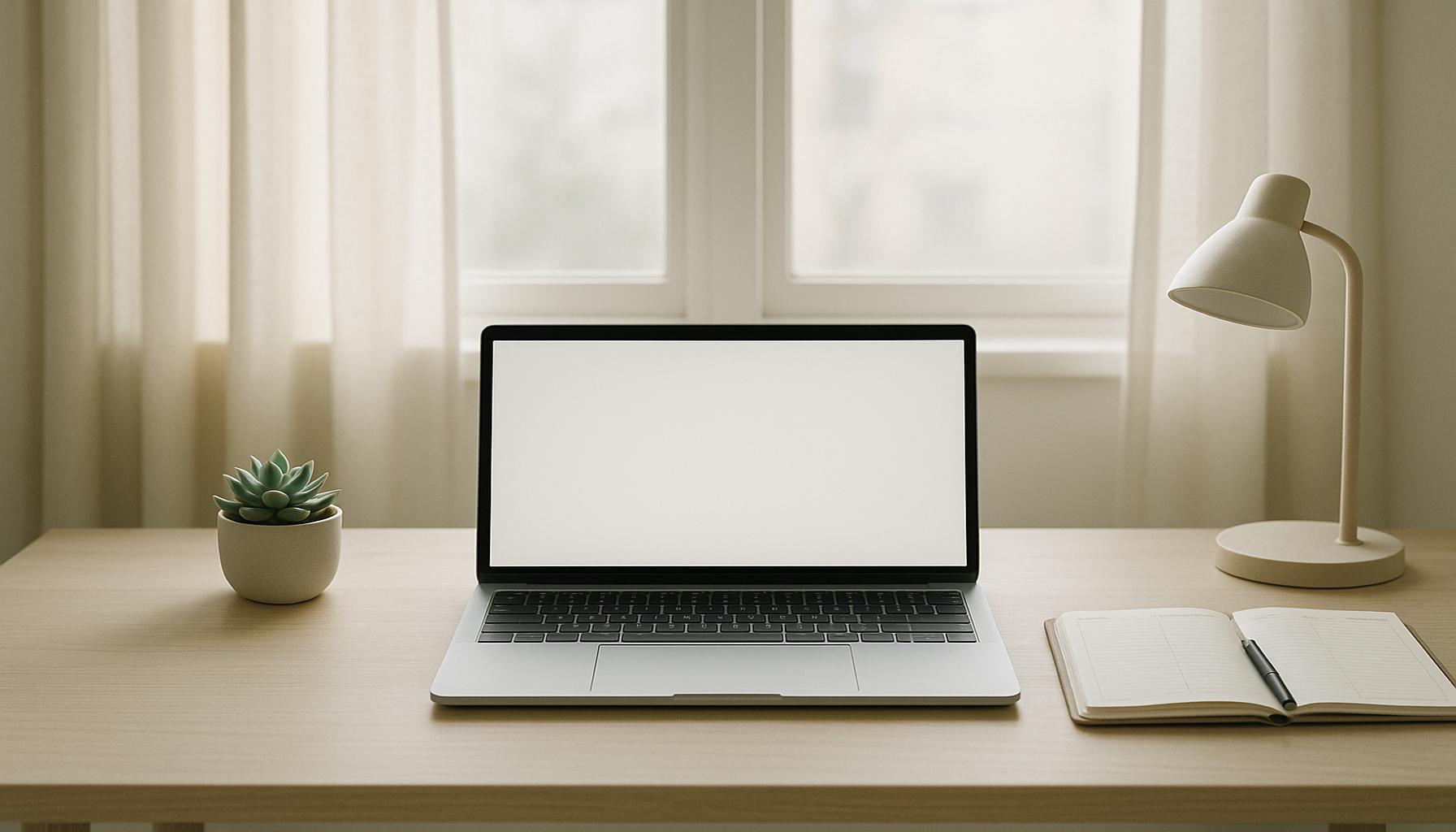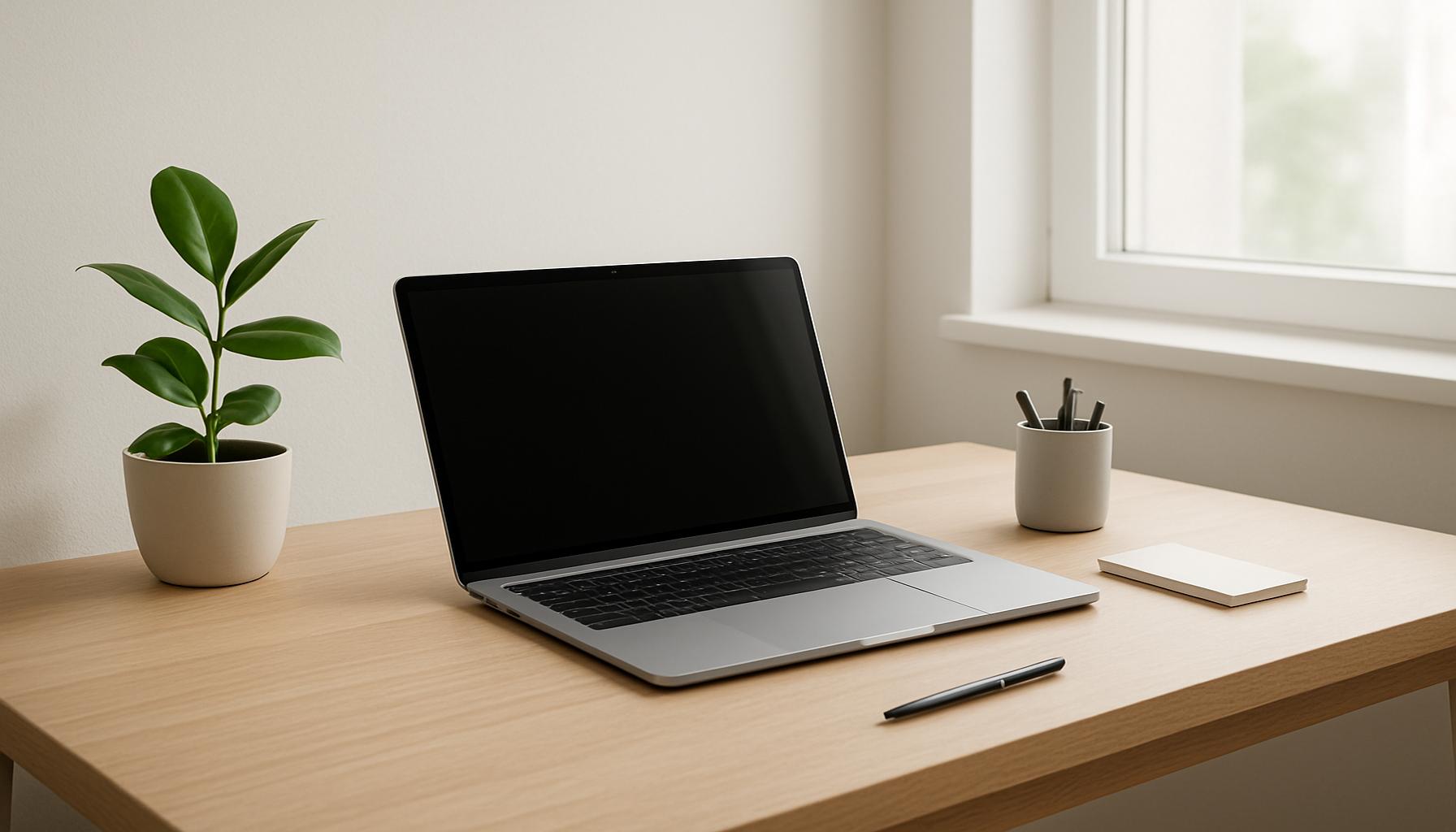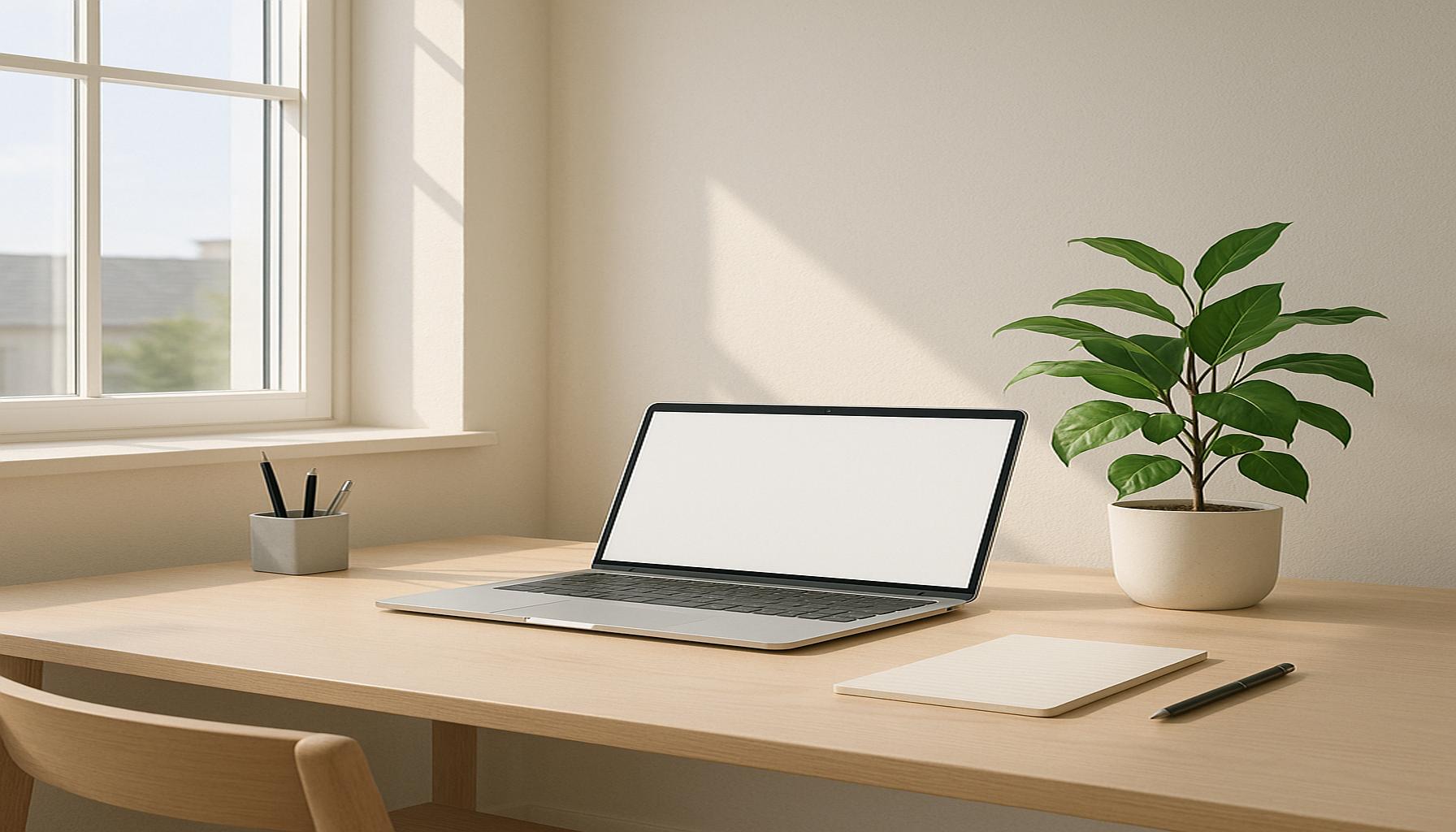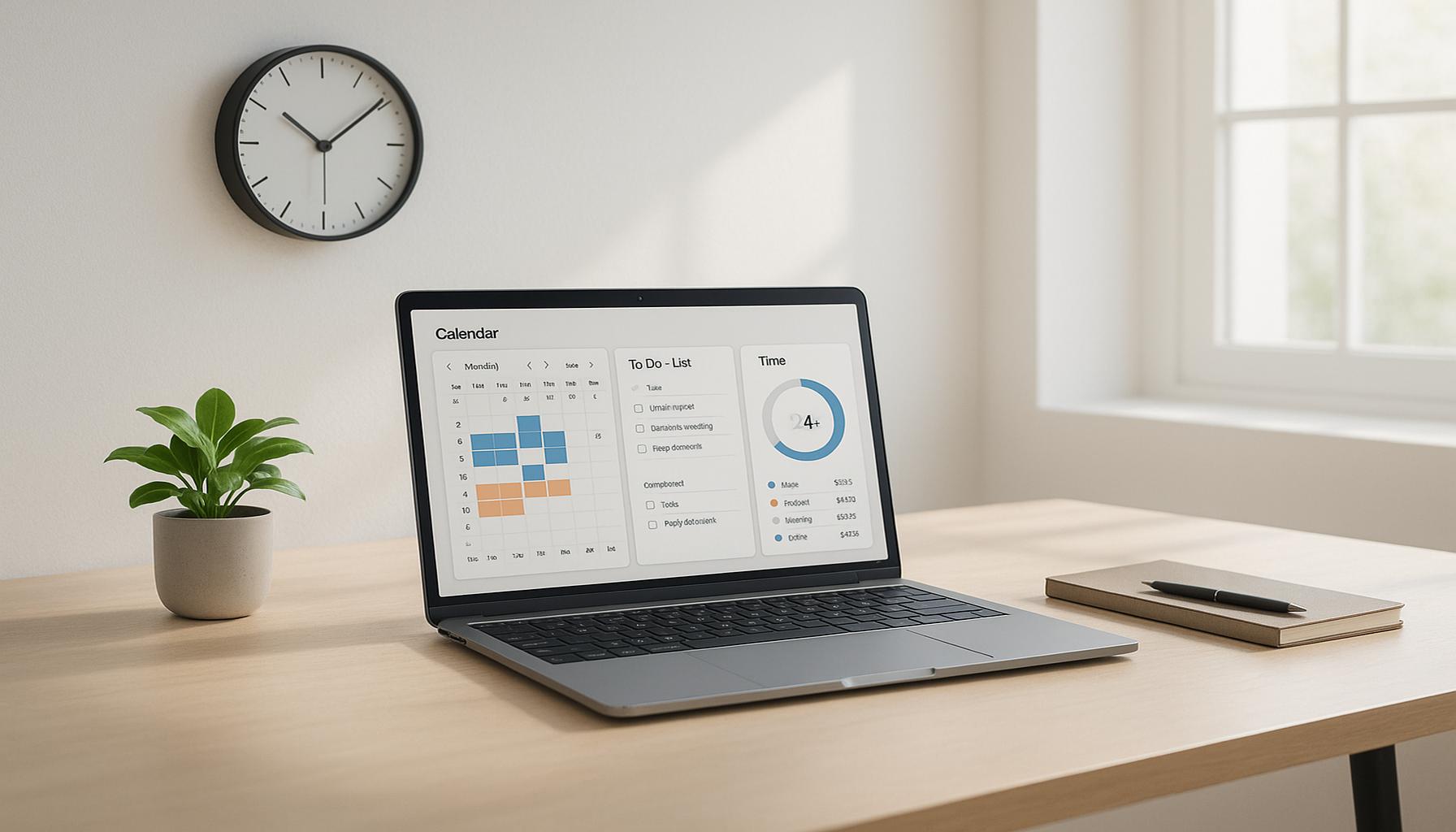Minimalist Organization Strategies to Maximize Productivity at Work

The Impact of Clutter on Mental Clarity
In the bustling landscape of today’s professional world, the physical and mental clutter we accumulate can profoundly affect our ability to perform effectively. Clutter can hinder clarity, obstructing pathways to creativity and efficiency. As professionals increasingly seek ways to maximize productivity, minimalism has emerged not only as a lifestyle choice but also as a serious organizational strategy in workplaces across the United States.
How Minimalism Enhances Workplace Efficiency
The principles of minimalism focus on stripping away the non-essential to make way for what truly matters. This is particularly relevant in professional settings where multitasking and distractions can derail even the most disciplined worker. By adopting minimalist organization strategies, individuals can not only clear their physical spaces but also unclutter their minds, which leads to tangible improvements in productivity. For instance, consider how a minimalist desk—free of unnecessary items and distractions—can allow for greater mental clarity and focus, leading to improved task completion rates.
Exploring Benefits of Minimalism at Work
There are several key benefits associated with implementing minimalist strategies in the workplace:
- Reduced distractions: A clean and organized workspace minimizes interruptions related to misplaced items and excessive visual clutter.
- Increased focus: Clarity in organization fosters deeper concentration, allowing employees to immerse themselves fully in their tasks.
- Better time management: Knowing where everything is not only saves time but also enhances decision-making and efficiency.
Practical Steps to Implement Minimalism
Implementing minimalist strategies can be straightforward. Professionals can begin with some self-reflection by asking vital questions such as:
- What items are essential for daily tasks?
- Which tools enhance productivity without creating chaos?
- How can digital decluttering transform my approach to daily communications?
For example, consider initiating a weekly review to assess digital files and emails, deleting what is no longer needed and categorizing the essentials to streamline workflow. Tools like email filters or digital notebooks can promote a clutter-free digital experience that complements a minimalist physical workspace.

The Broader Impact on Organizations
Research indicates that organizations embracing minimalism witness significant improvements in team efficiency and morale. A study from the organization Stanford Graduate School of Business noted that teams with less cluttered environments report greater satisfaction and are often more innovative. By shifting the focus from quantity to quality—prioritizing impactful work over a surplus of tasks—companies can position themselves for long-term success. As we explore these minimalist strategies further, you will discover tailored tips that can lead to substantive changes in your work environment, enhancing not just productivity but overall job satisfaction.
DISCOVER MORE: Click here for valuable workspace tips
Streamlining Your Workspace for Maximum Effectiveness
Creating a workspace that fosters productivity is not merely about the physical arrangement of items; it’s about cultivating an environment that enhances clarity and focus. To embrace minimalist organization strategies, one must start by examining the existing workspace dynamics. Start with a systematic approach to decluttering, focusing on both physical and digital spaces where distractions often lurk. This foundational step lays the groundwork for improved productivity, allowing professionals to concentrate on what truly matters in their work.
Assessing the Current State of Your Workspace
Identifying what works and what doesn’t in your workspace is an essential first step toward minimalism. To do this effectively, consider conducting a thorough inventory of both tangible and digital elements:
- Physical Inventory: Analyze your desk and office environment. Ask yourself which items you use daily and which ones have become mere decoration. A streamlined desk—free of external clutter—can significantly enhance focus during work hours.
- Digital Inventory: Examine your computer and digital tools. Frequently used applications should be easily accessible, while rarely used files and applications should be archived or deleted to streamline your workflow.
Creating Zones for Enhanced Productivity
Another effective minimalist strategy is to define specific areas of your workspace for different tasks. This zoning technique can prevent distractions and create a structured workflow. Here’s how to implement this:
- Designate a Work Zone: Create a specific area solely dedicated to working on tasks uninterrupted by personal items or distractions.
- Establish a Creativity Zone: Set aside a section of your workspace that’s designed for brainstorming and innovation, equipped with basic tools like notepads and markers, while keeping them separate from your main work area.
- Include a Relaxation Zone: If possible, incorporate space for quick breaks—comfortable seating with a calming environment can rejuvenate your mind when workplace stress accumulates.
Establishing clear boundaries between different spaces encourages mental transitions between tasks, thereby reducing cognitive overload. By visually and physically segmenting tasks within your workspace, the likelihood of distractions decreases, and focus increases.
Benefits of a Clutter-Free Path to Productivity
Transitioning to a minimalist workspace can yield substantial benefits, not just for individuals but also for their larger teams and organizations. Organizations that adopt these strategies often report:
- Enhanced Collaboration: When everyone in a team embraces minimalism, communication improves, and collaboration becomes more fluid.
- Heightened Creativity: A clutter-free environment empowers team members to think outside the box without the mental block that excessive clutter can create.
- Increased Job Satisfaction: Employees in minimalist workplaces often feel more in control and less stressed, leading to improved morale and productivity.
As organizations continue to grapple with the demands of modern work dynamics, integrating minimalist strategies can be a game-changer. The following segments will delve deeper into actionable tips and innovative ideas designed to enhance productivity through the minimalist approach, ultimately guiding you toward a clearer, more focused professional life.
| Category | Details |
|---|---|
| Streamlined Workspace | Creating a clean and organized workspace reduces distractions, allowing for greater focus on tasks. |
| Time Management Techniques | Utilizing techniques like the Pomodoro Technique promotes sustained productivity bursts followed by short breaks. |
| Digital Decluttering | Organizing digital files can enhance workflow efficiency by reducing time searching for documents. |
| Prioritization Methods | Using methods such as the Eisenhower Box helps in determining which tasks are urgent and important. |
Implementing minimalist organization strategies such as these not only enhances personal productivity but also fosters a more serene work environment. Adopting these approaches encourages individuals to take control of their workspaces, both physically and digitally, paving the way for innovative thinking and reduced stress levels. As you delve deeper into these strategies, you’ll discover that simplicity often leads to profound improvements in productivity standing at the helm of success in today’s fast-paced work culture. Embracing less truly can mean achieving more.
DISCOVER MORE: Click here to transform your space
Implementing Minimalist Work Practices for Greater Task Efficiency
Once you’ve streamlined your workspace and created well-defined zones for different tasks, the next step involves implementing minimalism into your daily work practices. This approach not only enhances the way you manage your time but also transforms your workload into a more manageable and efficient process. The following strategies can bolster productivity while adhering to minimalistic principles.
Embracing the Power of Prioritization
A critical aspect of minimalism is recognizing the value of prioritization. Utilizing a prioritized to-do list can significantly enhance your productivity by directing your focus toward high-impact tasks. Here’s how to effectively implement prioritization:
- Identify Urgency vs. Importance: Use the Eisenhower Matrix to categorize tasks into four quadrants: urgent and important, important but not urgent, urgent but not important, and neither urgent nor important. This method allows you to focus on what truly drives results.
- Set Daily Goals: At the beginning of each day, identify your top three goals that align with longer-term objectives. By concentrating on a limited number of tasks, you’re less likely to become overwhelmed, and you can achieve a sense of accomplishment by the end of the day.
By working on fewer tasks that genuinely matter, you can create output that is not only productive but also impactful, paving the way for sustained success. This kind of focused strategy is especially relevant in a fast-paced work environment where distractions are in abundance.
Mastering the Art of Time Blocking
Time blocking is another powerful minimalist strategy that can vastly enhance productivity. By allocating specific blocks of time to dedicated tasks, you minimize distractions and optimize concentration:
- Schedule Dedicated Work Sessions: Allocate specific time slots for focused work on particular tasks, devoid of interruptions. For instance, designate one hour in the morning solely for project work, followed by a brief break, and then a continuation of another dedicated task in the late morning.
- Include Buffer Times: Be sure to incorporate buffer periods between your time blocks for unexpected interruptions or quick mental breaks. This flexibility helps you stay on track even when things don’t go as planned.
Time blocking allows individuals to create a rhythm to their workflow while minimizing the chaos of multitasking, which has been shown to decrease overall productivity significantly.
Adopting Digital Minimalism
In today’s digital age, the clutter often extends beyond our physical workspaces to our digital devices and online tools. Embracing digital minimalism can lead to a more focused and efficient work process:
- Streamline Your Email Management: Use tools like the 2-Minute Rule: if a task will take less than two minutes, do it immediately. For longer tasks, categorize emails based on response priority and limit your time spent on email checking to specific intervals throughout the day.
- Organize Digital Files: Archived files that are no longer relevant should be deleted or stored systematically. Create folders based on projects and categorize files for easy navigation, ensuring that your digital environment is as tidy as your physical workspace.
By reducing digital clutter, you’re less likely to feel overwhelmed, making way for increased focus on current projects and tasks. This holistic approach to minimalism can have profound effects on an individual’s ability to work efficiently.
Ultimately, embracing minimalist organization strategies can create a robust framework for maximizing productivity at work. By fostering a balanced and clutter-free environment, both physically and digitally, professionals can equip themselves to thrive in today’s demanding workplace. The next section will explore additional innovative techniques that can elevate minimalist practices, guiding you to a more fruitful professional journey.
DISCOVER MORE: Click here to learn how to streamline your life
Conclusion: The Future of Productivity through Minimalism
In a world overwhelmed by constant demands and distractions, the adoption of minimalist organization strategies offers a refreshing path to enhance productivity at work. As we explored, techniques such as effective prioritization, time blocking, and digital minimalism not only foster a more streamlined environment but also promote a focused approach to task management.
The benefits of these practices resonate with professionals across various industries, proving crucial in navigating today’s fast-paced and often chaotic work landscape. Simplifying one’s workspace and curating digital tools enables individuals to allocate their time and energy to what matters most. Embracing these strategies can lead to significant improvements in both motivation and output, ultimately translating into career advancement and satisfaction.
Moreover, as organizations strive to cultivate cultures of efficiency, minimalism emerges as a vital consideration for team dynamics and collaborative projects. The results are clear: less clutter, both mental and physical, equates to clearer thinking and higher performance.
As we look to the future, it’s imperative for professionals to not only implement minimalist strategies but to continually reflect and adapt them in their own work practices. The journey towards maximal productivity is not linear; rather, it evolves with your needs and the ever-changing demands of the workplace. By embracing a minimalist mindset, you position yourself as a trailblazer, ready to meet challenges head-on and pioneer productivity within your industry.
In conclusion, the integration of minimalist organization strategies stands as a significant investment in your professional development, and those willing to explore and refine these principles will undoubtedly find themselves equipped to thrive in any work environment.


